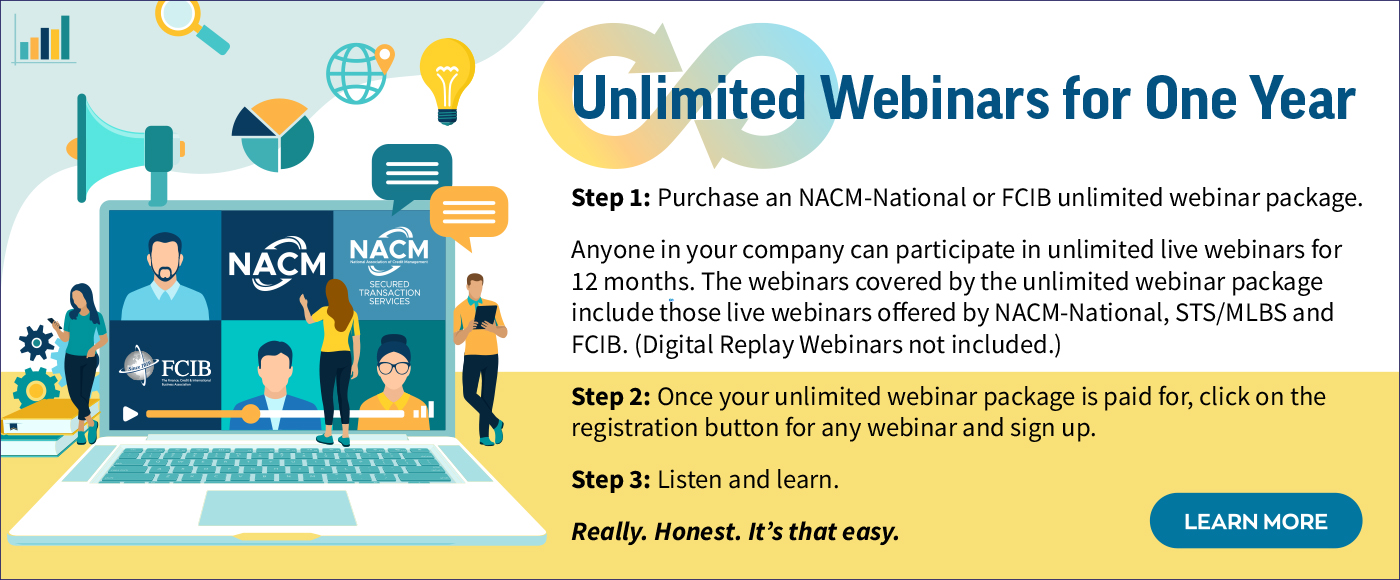eNews July 1
|
In the News
July 1, 2021
Getting the Perfect Automation Fit
for Your Credit Department’s Scoring Model
Annacaroline Caruso, editorial associate
Creating a strong risk assessment model is like trying to find the perfect pair of jeans. It is not always easy since there are so many different options and there is no one-size-fits-all approach. But once you find the model (or pair of jeans) that works best, it becomes clear just how essential it is for success.
So, credit managers should always be on the lookout for ways to improve risk assessment models because they help make weighty credit decisions. One way to do that is through automation.
Automation is a key player when it comes to keeping defaults as low as possible, said Peter Wahnschaffe, credit risk manager with BASF (Ludwigshafen, Germany), during an automation workshop sponsored by FCIB.
Currently, BASF has a fully automated scorecard for smaller customers (credit limits up to roughly $1 million), and a partially automated process for larger customers. But, Wahnschaffe said they are working to increase automation and improve the accuracy and efficiency of the models. “This is always a work in progress, working on the next generation of our assessment models,” he explained.
Automated scoring models will look different for every company, depending on the size and industry of its customers. The most successful models are created by credit managers who have a clear objective. “These are tailormade models,” Wahnschaffe said. “You need to set up a model that really reflects your setup and portfolio in order to reach good results.”
Automation can help companies transition from the traditional risk assessment to more forward-thinking analytics, said Wibke Kuhnert, corporate director of finance with Henkel (Düsseldorf, Germany). “Our predictive scoring model is superior to models based on historical data by giving more realistic scores.”
Unlike BASF, Henkel uses its internal scoring model for larger customers. “The goal is to predict the probability of default,” explained Ivana Blaskova, global process manager finance OTC at Henkel.
The model is fed more than 200 factors, some of the most important being payment delays, credit limit values and invoiced amounts. “These components are the most meaningful and can continue to change as the model continues training each quarter,” Blaskova said.
The scorecard takes those factors and spits out a number reflecting probability of default, which then allows the credit manager to place the customer into one of Henkel’s five risk categories. “The reflection of the risk has significantly improved compared to our deterministic model,” she said.
Automating risk assessment not only increases accuracy, but also frees up time for more value-added tasks, said Jarno Saario, CICP, director of credit at UPM (Helsinki, Finland). Automated credit limit setting is done for the smaller and more low-risk customers at UPM. “This allows our team more time to focus on assessing the larger customers and more high-risk customers,” he said.
Their automated scorecard uses external data from multiple platforms and puts 100% of weight on financial statements, which has been successful in helping manage more than 13,000 customers, Saario said. “We have 8 FTE’s [full time employees] per roughly EUR 8.6 billion in revenue. That’s something we couldn’t really do without this rather high level of automation.”
A lot of trust is put into these models to help predict risk as accurately as possible. KPIs are crucial to ensuring the scorecards are effective and doing its job. Saario recommended measuring credit limit total vs balance, overdues and credit losses to track the efficacy of your model.
Ripple Effects from Supply Chain Woes Affecting Credit Limits
Bryan Mason, editorial associate
As the pandemic appears to wind down, the impact it has made on the B2B industry continues to be felt through continued disruptions to supply chains.
Supply chains have suffered a series of domino effects compounded spikes in demand for materials; bottlenecking and closures at shipping ports; and labor shortages, said Ron Shepherd, CICP, and director of business development and membership for FCIB. All of which have led to supply shortages and requests for higher credit limits.
Many of the supply chain woes start with the lack of manpower, Shepherd noted. COVID created labor shortages in factories, which led to drops in production further exacerbated by drops in demand as consumers “went underground,” he added. And, labor shortages at ports and to logistics companies contributed to bottlenecking at ports and undelivered goods.
Manufacturers tapered production levels accordingly and are now struggling to catch up, but critical supplies such as computerized chips are in short supply for many goods.
With manufacturers being unable to meet this demand, the number of suppliers that possess the materials needed for projects has dwindled as a result. Companies are hopping from supplier to supplier, frantically trying to acquire any materials they can get their hands on, Shepherd said. “It’s like musical chairs; everyone is trying to get products.”
Given the shortages, customers are not just looking to purchase enough materials for current projects. “What is that buyer going to do?” Shepherd asked. “They’re going to go to their last remaining supplier, and if they have capacity, they’re going to say, ‘ship me anything you can.’”
As a result, customers are stretching their credit limits and asking for more. “It causes concentrations of orders that require higher credit limits,” he said. Despite historically high prices, that has not deterred the skyrocketing of purchase orders, he added.
Some credit professionals have noted they cannot accommodate these requests. The sheer volume of orders requires credit limits that are too high for creditors to accommodate. Other credit professionals have said that are working with their customers to help identify which customers their customers should sell to.
As prices increase, risks of inflation are among the list of concerns. Especially considering the relentless bottlenecking at ports across the globe. This complication may worsen as the Port of Yantian in China recently revealed that COVID outbreaks have caused port employees to cease work. According to CNBC, the Port of Yantian exports over 90% of the world’s electronic products. Additionally, ships attempting to unload materials along the California coast, including the Port of Long Beach, have continuously experienced major delays.
“There’s a lot of backlogs,” Shepherd said. With no clear end in sight to these supply chain issues, creditors can use credit insurance to help bridge the gap between larger purchase orders and insufficient credit limits.
Shepherd explained that suppliers can purchase credit insurance to increase their customers’ credit limits. For example, if a customer has a credit limit of $250,000, but needs $500,000 for a large purchase order, the supplier can purchase $250,000 in credit insurance to make up the difference. This comes at no additional risk because the customer will still be responsible for paying $250,000, and the credit insurer will be responsible for the other $250,000, if the buyer is unable to pay, he pointed out. The supplier is not increasing its exposure above the original credit limit of $250,000.
Shepherd added that credit insurance premiums are usually more than covered by the additional gross profit generated by the increased sales to the buyer. Suppliers can also reap the benefit of retaining that customer before they hop to the next potential supplier in search of product.
However, credit insurance is not always a universal fix to accommodate the need for increased credit limits for some buyers. “There are some buyers whose financials and cash flow, in the view of the credit insurer, just don’t support the requested limit,” Shepherd said.
CMI Drops in June, Shows Possible Signs
of Early Economic Slowing
NACM’s Credit Managers’ Index (CMI) for June is down from May, a possible reflection of the negative impact of inflation and slowed government stimulus. The combined score for this month totaled 57.5, compared with 59.8 registered last month and 60.6 in April.
“This is a good time to remember that credit managers are focused primarily on the future, and they seem to be getting a little nervous,” said NACM Economist Chris Kuehl, Ph.D.
Despite the drop, June’s combined score is still in the expansion zone. “The numbers are still quite high,” Kuehl said. “But they are coming off that April peak, and that is a first signal of some slowing in the overall economy.”
At 64.8, the combined score for favorable factors fell to its lowest number seen since November. Sales fell 5.5 points, and new credit applications, 1.5 points, month on month. With a 1.6-point drop, amount of credit extended reached it lowest point since February.
The combined score for unfavorable factors also slipped to its lowest number since February, at 52.7. There were some significant changes as far as unfavorable factors. Rejections of credit applications dropped 0.8 points; and filings for bankruptcies, accounts placed for collection and dollar amount of customer deductions, 1 point each. However, “It does not signal any real issues,” Kuehl noted.
More significant changes were noted in disputes, which took a 3.3-point dive, as it coasted dangerously close to the contraction zone. Overall, “the biggest change and by far the most worrying was dollar amount beyond terms,” he said. It plummeted 7.6 points into the contraction zone. “This is an early sign of distress in companies and suggests that some are starting to try to protect their cash flow at the expense of their creditors,” he added.
In total, “unfavorables factors remained in decent shape, but they are no longer all in positive territory as they had been for seven months in a row,” Kuehl noted.
Lien waivers are a tool that can protect creditors and their customers, when they are used correctly. However, it is important to choose the right type of waiver based on the situation because the wrong choice can leave a collections team empty-handed.
NACM’s Construction Credit Think Tank, comprised of construction credit thought leaders, recently discussed the best ways to use the two types of waivers credit professionals generally use. Conditional lien waivers can be used by subcontractors and suppliers if they are still owed payments to maintain their right to file a lien upon receipt of payment. Unconditional lien waivers are often used when payment has been received to waive lien rights to the specified project.
Knowing the difference between the two is critical in situations where a customer offers payment in exchange for a lien waiver.
“Unconditional waivers are a legal document stating one party has paid another party in full through a specific date,” said Ty Knox, ICCE, director of credit & risk for EFCO Corp. (Des Moines, IA). “These documents are relied upon by many parties on a construction project and can unlock millions in payments that flow through to all subcontractors and material suppliers. Make sure you are reading these documents very closely before signing.”
The language presented within the agreement can determine if the waiver is conditional or unconditional. To read more about specific language, click here.
According to Knox, the best practice to follow is to “never sign an unconditional lien waiver until the check clears the bank. You should always utilize a conditional waiver when trading waivers for checks, and follow up with an unconditional waiver once the payment clears your bank,” he said.
Credit professionals may get caught in a situation where they exchanged an unconditional lien waiver for payment and then the check does not clear the bank. Although the exchange was agreed upon and the deal was made, Knox noted companies can still maintain their rights because a “bounced check is a material breach.” A material breach is when one party receives significantly less or a different amount of compensation than what was specified within the contract.
“As long as you are timely in response, you may rescind or recall the waiver based on a breach,” Knox said. The easiest way to ensure a waiver is conditional upon the receipt of payment is to review and remove any language or phrases that make it unconditional. This can save your company countless dollars on an endless number of projects.
“Each state has statutory language associated with lien waivers,” Knox said. “Make sure to strike any additional terms and conditions that your customers may try to incorporate into the waivers.”
Samuel Smith, regional finance manager of Crescent Electrical Supply Company (East Dubuque, IL), agreed with Knox. Removing unconditional language should be done “just for mental peace,” Smith said.
“A good example that I always give is if you have a ‘pay when’ or ‘pay if’ clause in a purchase order that comes in and you’re in a state where that is unenforceable and you sign off on it, what does your customer think?” Smith continued. “Your customer thinks that you’re good with the ‘pay when paid’ [clause]. So, when do you think you’re going to get paid? Whenever they do.”
Also, the addition of a bankruptcy clause within the waiver protects your company if your customer were to file bankruptcy, said Chris Ring, of NACM Secured Transaction Services. “If you sign a conditional or unconditional waiver and your customer files for bankruptcy within 90 days, the payment exchanged for the unconditional waiver could be deemed a preference. Another caveat to add to a waiver is that the customer not file for bankruptcy within 90 days.”
| Advanced Regulatory Compliance: Leveraging Internal Controls and Due Diligence for the Order-to-Cash Process Speaker: Chris Doxey, CAPP, CCSA, CICA, CPC, Doxey Inc. |
July 8 |
|
July 12 |
Protecting Liens & Bond Collateral in Wisconsin
Speaker: Jim Sander, Esq., Larkin Hoffman's Real Estate Litigation Group |
| An Economic Perspective on Country Risk in Latin America Speaker: Greetje Frankena, Atradius Credit Insurance |
July 13 |
|
July 13 |
Financial Statements and Red Flags in Credit Risk Management Speaker: Craig Simpkins, CCE, CICP, Johnson Controls |
| SOX and Internal Controls for the Order to Cash Process
Speaker: Chris Doxey, CAPP, CCSA, CICA, CPC, Doxey Inc. |
July 14 |










